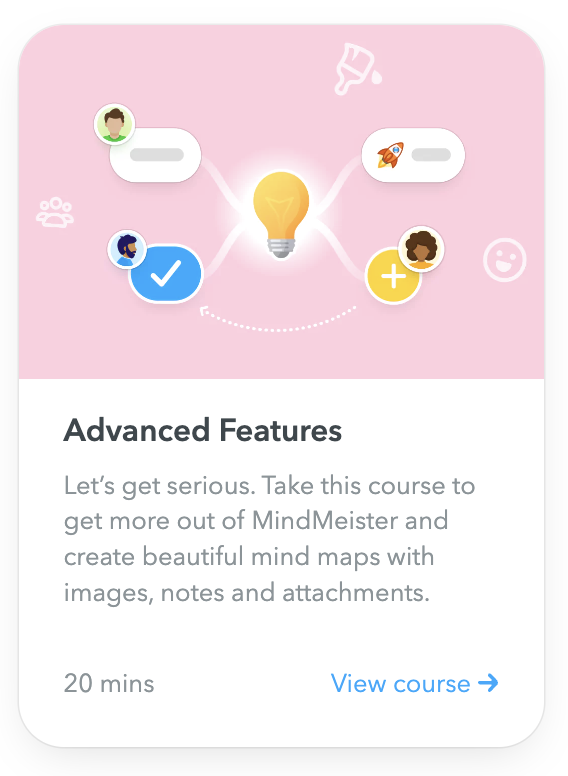🧠 Mapped by Meister: Vroom-Yetton Decision Model

Good morning!
Did you know your amazing mind makes 35,000 decisions a day? Impressive, right? Of course, not all of these decisions have big consequences... your business probably won't suffer because you chose to drink your coffee without milk this morning. However, depending on your role, you might also be making bigger, more important, and more risky decisions on a daily basis.
Cue the Vroom-Yetton Decision Model. This model poses critical questions to help team leads decide how to decide. It is based on the theory that there are five decision-making styles, which are affected by three main factors: quality, collaboration and time. Interested in learning how to make important decisions the right way? Read on!
🤩 @Kerstin Holzer created the Vroom-Yetton Decision Model in MindMeister. Follow this link to copy the model to your own account and edit it as you please! 🤩
How is the Vroom-Yetton Decision Model Structured?
This map is structured as a flow chart with different steps, each step asks a question. Let's look again at the three factors the questions are based on:
To help you consider these wider issues, the Vroom-Yetton Decision Model is composed of the following 7 questions:
- Is the quality of the decision important?
- Is team commitment to the decision important?
- Do you have enough information to make the decision on your own?
- Is the problem well structured?
- If you were to make the decision yourself, would the team support it?
- Does the team share organizational goals?
- Is it likely that the decision will cause conflict among team members?
How to Use Kerstin's Vroom-Yetton Decision Model
The model follows a logical structure from top to bottom. As you answer each question, you move further down. Eventually, you will arrive at your answer.
Your answer will be in the form of a code: A1, A2, C1, C2, G2. These codes indicate the decision-making style you should employ. As you can see below, Kerstin has included a description of each style in the map. She has also color-coded the results to make it easier to cross-reference them with what they actually mean.
What Do You Think?
I'd love to hear what you think of this decision-making model. Please let me know in the comments below. If you're interested in better decision-making practices, you should also check out this article:
Best,
Miša
Comments
-
Thank you @Miša Hennin for posting about the Vroom-Yetton Decision Model here 🙌 I'm looking forward to hearing from a team lead about the practical use. In my research, I found that it really can be an effective model for team leads to make better decisions. It guides you with the right questions on how to make the best decision – alone or with your team. It gives you the confidence to know you’ve done the right thing and also makes your decision-making process much more comprehensible and transparent for your team. ✅
2 -
Thanks so much for your insights @Kerstin Holzer !
0 -
Check out how our partner @Maria Steinberg uses MindMeister to make quick decisions on design questions:
2 -
@Miriam Haberer has also shared how her team makes decisions during consultations using MeisterTask and MindMeister:
2 -
Finally, @Ivan Leopizzi explains how MindMeister helps him decide how to allocate the right resources in construction projects:
2
Free Online Courses:


Categories
- All Categories
- 11 MeisterNote
- Deutsch
- English
- 126 Roadmap und Feature-Board
- Ankündigungen
- YouTube-Tutorials ansehen
- Erfolgsgeschichten lesen
- MeisterTask Academy
- Vorlagen
- Anwendungsfälle
- Help Center
- 38 Feature Roadmap
- 2 Announcements
- 2 Inspiration Hub
- 41 Ask the Community
- 60 Frag die MeisterTask-Community
- 2.1K MindMeister Community
- 1.3K MeisterTask
- Ask a Question
- Community auf Deutsch
- 579 MeisterTask - DE
- 117 Community Central





![[MM] Make better decisions__Maria_EN_Facebook_1200x630_230103 (1).png](https://us.v-cdn.net/6037061/uploads/KAJSBENIWKD1/5bmm-5d-make-better-decisions-maria-en-facebook-1200x630-230103-281-29.png)
![[MM] Make better decisions__Miriam_EN_Facebook_1200x630_230103 (1).png](https://us.v-cdn.net/6037061/uploads/2S891IL0HWLR/5bmm-5d-make-better-decisions-miriam-en-facebook-1200x630-230103-281-29.png)
![[MM] Make better decisions_Ivan_EN_Facebook_1200x630_230103 (1).png](https://us.v-cdn.net/6037061/uploads/NWADCN0W7YJN/5bmm-5d-make-better-decisions-ivan-en-facebook-1200x630-230103-281-29.png)